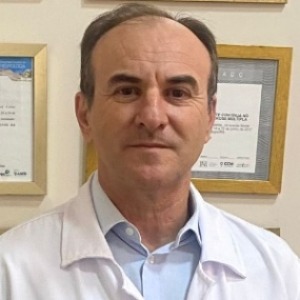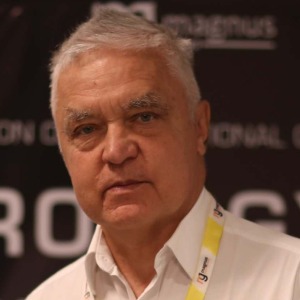Scalp Wounds
Scalp wounds can occur for a variety of reasons, including trauma, surgery, and skin conditions such as eczema. Scalp wounds can range from minor to severe, and may include open wounds, lacerations and abrasions. They can be especially serious, however, when they get infected. Infected scalp wounds may become painful, red, and swollen. They may also bleed more than usual, and can cause fever, chills and other symptoms. In rare cases, they can even spread to the brain and cause death. It is important to identify scalp wounds early and seek proper treatment. The first step to treating a scalp wound is to ensure that the wound is thoroughly cleaned. This means gently washing the affected area with warm soapy water. If there is debris or an object still embedded in the wound, seek medical help immediately. Medical assistance may also be needed if the wound is more than an inch in diameter, has jagged edges, is deep, or is otherwise severe. Once the wound has been cleaned, it is important to apply an antiseptic solution such as hydrogen peroxide or iodine to the affected area. If the wound is large and deep, it may need to be closed with sutures. In some cases, an antibiotic cream or ointment may need to be applied before the suturing process as a preventive step. If sutures are used, they may need to be left in place from 1 to 3 weeks, depending on the severity of the wound. Finally, it is important to keep the wound site clean and dry, and covered with a bandage to protect it from infection. Gauze dressings and antiseptic creams or ointments may also be used, and the dressing should be changed at least once a day. If there is any sign of infection such as fever, increased redness, drainage or pain, seek medical help immediately. In conclusion, scalp wounds can be serious and may require medical attention. Early recognition and treatment is key to preventing infection and other injuries. Proper cleaning, dressing changing and antibiotic treatment can help to speed healing and reduce the risk of complications.
Scalp wounds can occur for a variety of reasons, including trauma, surgery, and skin conditions such as eczema. Scalp wounds can range from minor to severe, and may include open wounds, lacerations and abrasions. They can be especially serious, however, when they get infected. Infected scalp wounds may become painful, red, and swollen. They may also bleed more than usual, and can cause fever, chills and other symptoms. In rare cases, they can even spread to the brain and cause death. It is important to identify scalp wounds early and seek proper treatment. The first step to treating a scalp wound is to ensure that the wound is thoroughly cleaned. This means gently washing the affected area with warm soapy water. If there is debris or an object still embedded in the wound, seek medical help immediately. Medical assistance may also be needed if the wound is more than an inch in diameter, has jagged edges, is deep, or is otherwise severe. Once the wound has been cleaned, it is important to apply an antiseptic solution such as hydrogen peroxide or iodine to the affected area. If the wound is large and deep, it may need to be closed with sutures. In some cases, an antibiotic cream or ointment may need to be applied before the suturing process as a preventive step. If sutures are used, they may need to be left in place from 1 to 3 weeks, depending on the severity of the wound. Finally, it is important to keep the wound site clean and dry, and covered with a bandage to protect it from infection. Gauze dressings and antiseptic creams or ointments may also be used, and the dressing should be changed at least once a day. If there is any sign of infection such as fever, increased redness, drainage or pain, seek medical help immediately. In conclusion, scalp wounds can be serious and may require medical attention. Early recognition and treatment is key to preventing infection and other injuries. Proper cleaning, dressing changing and antibiotic treatment can help to speed healing and reduce the risk of complications.

Ken Ware
NeuroPhysics Therapy Institute, Australia
Robert B Slocum
University of Kentucky HealthCare, United States
Yong Xiao Wang
Albany Medical College, United States
W S El Masri
Keele University, United Kingdom
Jaqueline Tuppen
COGS Club, United Kingdom
Milton Cesar Rodrigues Medeiros
Hospital Santa Casa de Arapongas, Brazil




Title : Perception and individuality in patient cases identifying the ongoing evolution of Myalgic Encephalomyelitis/Chronic Fatigue Syndrome (ME/CFS)
Ken Ware, NeuroPhysics Therapy Institute, Australia
Title : Narrative medicine: A communication therapy for the communication disorder of Functional Seizures (FS) [also known as Psychogenic Non-Epileptic Seizures (PNES)]
Robert B Slocum, University of Kentucky HealthCare, United States
Title : Rabies: Challenges in taming the beast
Alan C Jackson, University of Calgary, Canada
Title : Neuro sensorium
Luiz Moutinho, University of Suffolk, United Kingdom
Title : Traumatic Spinal Cord Injuries (tSCI) - Are the radiologically based “advances” in the management of the injured spine evidence-based?
W S El Masri, Keele University, United Kingdom
Title : Personalized and Precision Medicine (PPM), as a unique healthcare model through biodesign-driven biotech and biopharma, translational applications, and neurology-related biomarketing to secure human healthcare and biosafety
Sergey Victorovich Suchkov, N.D. Zelinskii Institute for Organic Chemistry of the Russian Academy of Sciences, Russian Federation